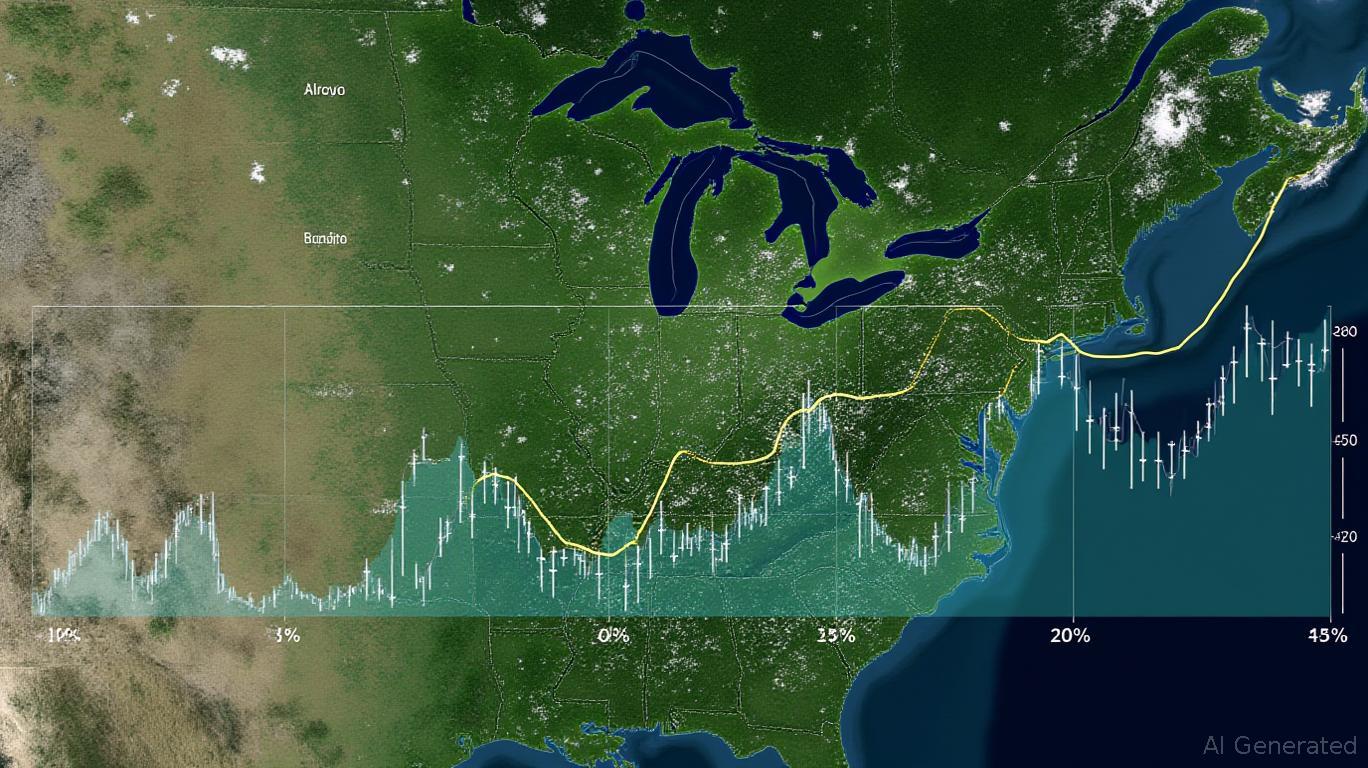Weathering the Storm: Navigating Volatility in CBOT Agricultural Futures
The agricultural commodities market has entered a period of heightened volatility, driven by a perfect storm of geopolitical tensions, weather disruptions, and logistical bottlenecks. For traders, this turmoil presents both risks and opportunities to capitalize on short-term swings in corn, soybeans, and wheat futures. Let's dissect the key dynamics shaping prices and explore strategies to profit from this environment.

The Current Landscape: Supply-Side Stressors and Trade Wars
Wheat: Prices have slumped to $5.36 per bushel as U.S. harvest prospects improve, with favorable rains boosting yields. However, geopolitical headwinds—such as China's 15% tariffs on U.S. wheat imports—undermine export demand. Meanwhile, Australia's record 2024/25 wheat crop (34.1 million metric tons) and Black Sea surplus supply further pressure prices.
Corn: The May contract closed at $4.51 per bushel, pressured by trade retaliation from China and Mexico, logistical delays on the Mississippi River, and weaker ethanol demand. The USDA's May report highlighted a 4.6% drop in ethanol corn usage, signaling reduced biofuel demand.
Soybeans: Prices dipped to $9.99 per bushel as China redirected purchases to South American suppliers. Brazil's rapid soybean harvest (50% complete) and Argentina's potential oilseed strike added to bearish sentiment.
Key Drivers for Short-Term Volatility
- Weather Watch:
- U.S. Planting Delays: Persistent rain in the Midwest has slowed corn and soybean planting, raising concerns about reduced acreage. Ohio's corn planting lags at 72%, far below the national average of 93%.
South American Harvest Risks: Argentina's heavy rainfall threatens corn and soybean quality, while Brazil's drought in key growing regions could slash safrinha corn yields.
Trade Tensions:
- China's retaliatory tariffs on U.S. grains have slashed export opportunities. Traders should monitor whether Beijing softens its stance ahead of critical USDA supply reports.
Russia's revised wheat export forecast (42.5 million metric tons) highlights the competitive threat from Black Sea suppliers.
Market Sentiment:
- Managed money funds have reduced long positions in grains, reflecting skepticism about demand recovery. However, any geopolitical escalation (e.g., Ukraine grain export disruptions) could spark a short-covering rally.
Short-Term Trading Opportunities
1. Wheat: Buy the Dip Ahead of USDA Reports
The May USDA report is expected to confirm stable U.S. wheat stocks, but traders should focus on near-term technical support around $5.00/bu. A break below this level could signal further declines toward $4.80/bu. Conversely, a rebound above $5.50/bu—driven by Black Sea supply disruptions—could trigger a short squeeze.
2. Corn: Fade the Weakness with Stop-Losses
Corn's $4.50/bu price is near its January 2025 low. Traders might consider bullish positions if planting delays force USDA to cut acreage estimates in its June 30 report. However, a close below $4.30/bu signals a move toward $4.00/bu. Use tight stop-losses given ethanol demand risks.
3. Soybeans: Fade South American Gains
Brazil's harvest progress and Argentina's labor disputes create a “buy the rumor, sell the fact” dynamic. Traders could short soybeans if prices approach $10.50/bu, targeting $9.50/bu as the next support level. Monitor U.S.-China trade signals for countertrend rallies.
Risk Management and Positioning
- Timeframes: Focus on intraday and weekly trades, as fundamentals can shift rapidly with weather updates or geopolitical news.
- Diversification: Hedge wheat longs with soybean shorts to balance exposure to Black Sea and South American supply risks.
- Liquidity: Prioritize liquid contracts (e.g., December corn or November soybeans) to avoid slippage during volatile sessions.
Conclusion
The CBOT agricultural complex remains a high-reward, high-risk arena. Traders who stay attuned to weather forecasts, USDA data releases, and geopolitical developments can exploit short-term swings. For now, the playbook is clear: trade the noise, but bet on fundamentals. As the old adage goes, in agriculture—the market climbs a wall of worry.
Investors should act swiftly but cautiously, using disciplined risk management to turn volatility into profit. The next USDA reports and summer weather will decide whether these commodities rebound or sink further. Stay nimble.
John Gapper is a pseudonym for a seasoned commodities analyst specializing in futures and macroeconomic trends. This article reflects the author's views and is not financial advice.

Comments
No comments yet